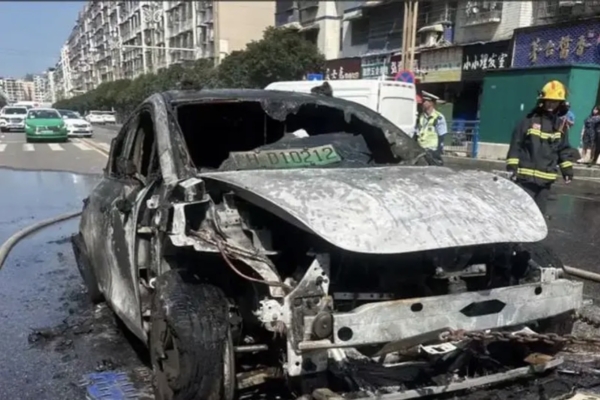China’s electric vehicle sales have surpassed traditional fuel cars, driven by the subsidies from the Chinese Communist Party. However, the complaints from car owners remain high, with data showing a nearly 11% increase in complaints in the third quarter of this year compared to the second quarter. This increase is accompanied by a series of incidents involving vehicle fires.
According to a report released by China Quality Car Network on October 11th, there were 40,439 valid complaints about cars in the third quarter of 2024, representing a 10.9% increase from the second quarter. These complaints covered 221 car brands and 1,262 car models, with an increase of 20 brands and 71 models from the previous quarter.
Among the complaints for the 2024 models, mid-size SUVs, mid-size cars, and compact SUVs were the top three most complained-about types, accounting for over half of the total complaints. The number of complaints for mid-size SUVs more than doubled compared to the previous quarter.
In September, the top three most complained-about car models were the BYD Han, Haval H6, and Xuan Yi. The primary complaint about the BYD Han included issues with the car’s multimedia system freezing, false advertising of 5G technology, sales fraud, and hidden fees.
Most of the complaints are related to performance and functionality, but vehicle fires pose a serious threat to both property and life.
Recently, the Southern Metropolis Daily reported a video circulating on social media showing a blue NIO ES6 electric vehicle catching fire after crashing into a flower bed on the roadside and then flipping over and hitting another white vehicle. After the crash, the NIO ES6 caught fire, causing severe damage. The driver suffered broken ribs, while his wife remained unconscious in ICU as of September 22.
The driver and NIO had differing accounts of the accident. The driver claimed that the vehicle suddenly accelerated to 100 mph with no response from the brakes, despite his attempts to turn off the power switch and shift gears. The vehicle went out of control.
NIO, on the other hand, stated that the driver aggressively pressed the accelerator to 100% for 13 seconds.
The driver, Mr. Zhou, rejected NIO’s explanation, stating to the media, “I did not mistakenly press the accelerator due to road conditions while driving normally. I was looking for a parking spot at a low speed when the vehicle suddenly went out of control. Who would keep the accelerator pressed to the maximum for 13 seconds while maneuvering for a parking space?”
Mr. Zhou also expressed doubts about the authenticity and legality of the data provided by the manufacturer.
The Southern Metropolis Daily also reported another incident of an electric vehicle catching fire, which resulted in the destruction of three sedans and nearly a thousand square meters of an underground parking garage.
On August 19th, a fire broke out in the underground parking lot of the TCL Champs Elysees community in Huicheng District, Huizhou City. Three cars and multiple electric bicycles were destroyed in the fire. The roof of the underground garage, spanning nearly a thousand square meters, was charred, and the burnt sedans were reduced to skeletons.
The Huizhou Fire Department later confirmed that the fire was caused by a thermal runaway of the battery in a new energy vehicle.
In a video shared by a netizen, a blue electric vehicle in Kaili City, Guizhou Province, emitted thick smoke and burst into flames within a few minutes, followed by a violent explosion. The burning vehicle’s hood flew off due to the explosion.
Supporting and developing the electric vehicle industry has always been a key policy of the Chinese Communist Party. However, issues and accidents involving electric vehicles are often downplayed by government departments at all levels, revealing only a fraction of the real situation.
Automotive blogger “Car Lucky Words” summarized the three major problems of Chinese electric vehicles. Firstly, there is an overestimation of battery life. Despite claims of over 600 kilometers of range, some owners complain that the actual range falls significantly, especially when using air conditioning on highways, leading to frequent recharging.
Secondly, the intelligence of self-driving systems is questionable. While manufacturers promote advanced AI features like voice control, automated parking, and driver assistance, users have reported instances of misinterpretation and malfunction, such as playing the wrong music selection.
Moreover, the subsidization policies on electric vehicles raise questions among owners. Some criticize the fluctuating subsidy amounts and suspect manufacturers of adjusting prices shortly after purchase, creating a sense of deception.
The debate continues on whether these subsidy policies truly benefit consumers or just serve as profit-making tools for manufacturers.

